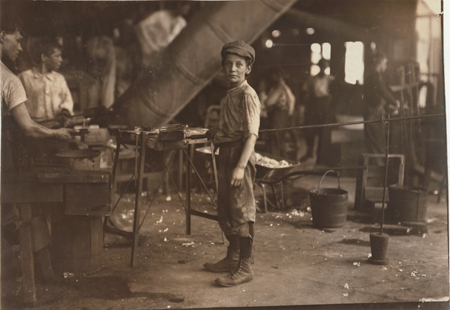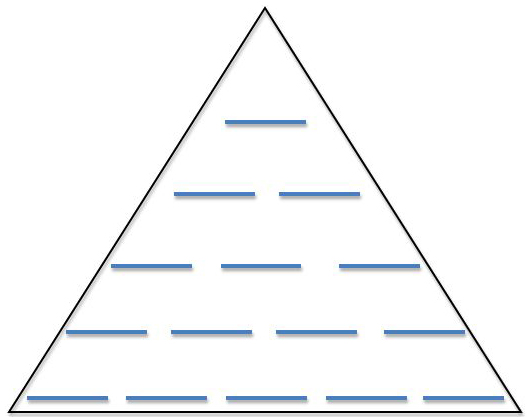Analyzing Primary Sources: Primary Source Thinking Triangle Activity

Educational consultant and author Dr. Bertie Kingore has some great ideas for teaching. TPS-Barat adapted her thinking triangle for use with primary source image analysis. This activity requires students to use higher level thinking skills as they interact with a primary source image. The thinking triangle also gives students practice in the visual equivalent of Common Core State Standards (CCSS) reading anchor standard 2.
When implementing this activity, you may choose to use a single image or a group of related images; you may also have students begin by looking at their images and first generating how and why questions. As with many primary source activities, the thinking triangle activity can be used at the beginning of a unit to get a sense of student background knowledge, attitudes, and thinking processes or at the end of a unit to assess student ability to make connections and demonstrate new understandings.
Primary Source Activity: Thinking Triangle[1]
Follow the directions below to record thoughts about the image using the thinking triangle.
Row 1 (Who/What?): Think about who or what this image represents and describe it in one word (write the word on the top line in the triangle).
Row 2 (When?): Think about the time period this image represents and describe it in two words (wirte each word on one line in the second row).
Row 3 (Where?): Think about the place shown in this image and describe it in three words (write each word on one line in the third row).
Row 4 (How?): Think of a How question that this image answers and write the answer in four words, one word on each line in the fourth row.
Row 5 (Why?): Think of a Why question that this image answers and write the answer in five words, one word on each line in the fifth row.
Please feel free to download and distribute the Primary Source Thinking Triangle Activity (but please keep the citation and format, including logos, intact).
Technology Tool: Interactive Thinking Triangle
More primary source analysis strategies
- Analyzing Primary Sources: Close Observation & Purposeful Questions
- Analyzing Primary Sources: Close Reading Markup Strategies
- Analyzing Primary Sources: Image Sequencing Activities
- Analyzing Primary Sources: Primary Source Investigations
- Analyzing Primary Sources: Sensory Exploration
- Connecting to the Common Core: Analyzing Primary Source Images
- Connecting to the Common Core: K-5 Writing Prompts & Activities
_____________________
¹ Adapted from the Thinking Triangle activity found in Kingore, Bertie. Teaching without Nonsense: Activities to Encourage High-Level Responses. Professional Associates, 1999.

